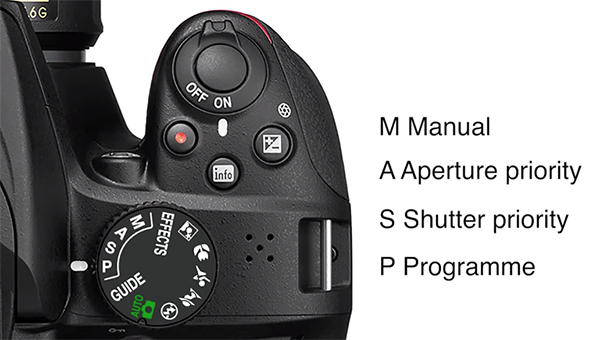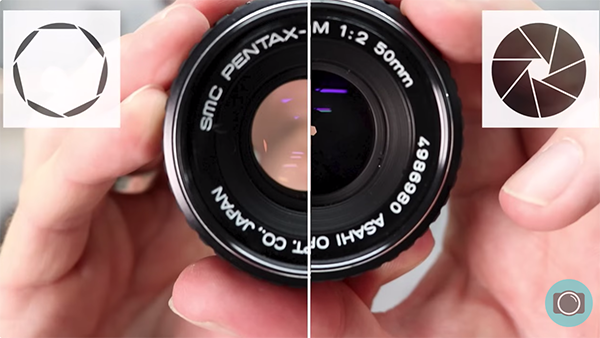Winter’s arrival transforms the world into a mesmerizing, frost-kissed realm, offering a unique canvas for photographers. Imagine the enchanting snowscapes, where the world turns into a serene, frosty paradise. Picture the delicate frost patterns on windows, the pristine snow blanketing the landscapes, and the quiet beauty of bare trees against a pale winter sky.
This season also presents a perfect chance to upgrade your photography equipment, and one noteworthy company, Tamron, offers enticing promotions on their high-quality lenses. We’ve put together a guide to assist you in selecting the ideal lens to suit your winter photography style. Whether it’s capturing the sparkle of ice-covered branches, the soft glow of a winter sunset, or the playfulness of snowflakes dancing in the air, your new Tamron lens will help you seize the unique splendor of winter. Get ready to explore and document the mesmerizing scenes this season offers.
Tamron 150-500mm F/5-6.7 Di III VC VXD (model A057)
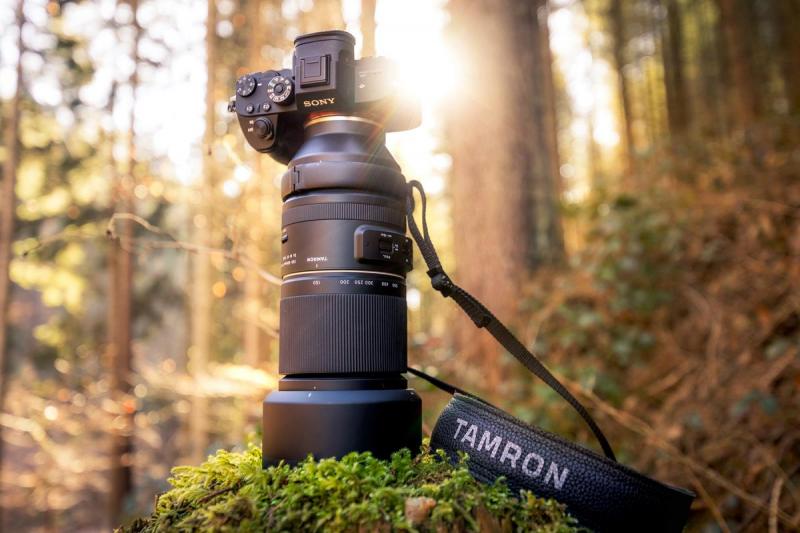
Product description: The 150-500mm F5-6.7 lens has a focal length of 500mm on the telephoto end, yet it provides remarkably compact size and extremely high image quality throughout the entire zoom range. It lets users enjoy spontaneous shooting in the ultra-tele realm where conventional wisdom once dictated a tripod. The ultra-telephoto zoom is equipped with the VXD (Voice-coil eXtreme-torque Drive) precise and high-speed linear motor autofocus mechanism and TAMRON’s proprietary VC (Vibration Compensation) image stabilization mechanism. At the 150mm end, this versatile lens offers an MOD (Minimum Object Distance) of 0.6m (23.6in) for powerful and dramatic close-ups.
Price: $1199 Sony E / $1299 Fujifilm X after $200 Instant Savings thru Dec 31, 2023; $1199 Nikon Z
Find a dealer
Tamron 50-400mm F/4.5-6.3 Di III VC VXD (model A067)
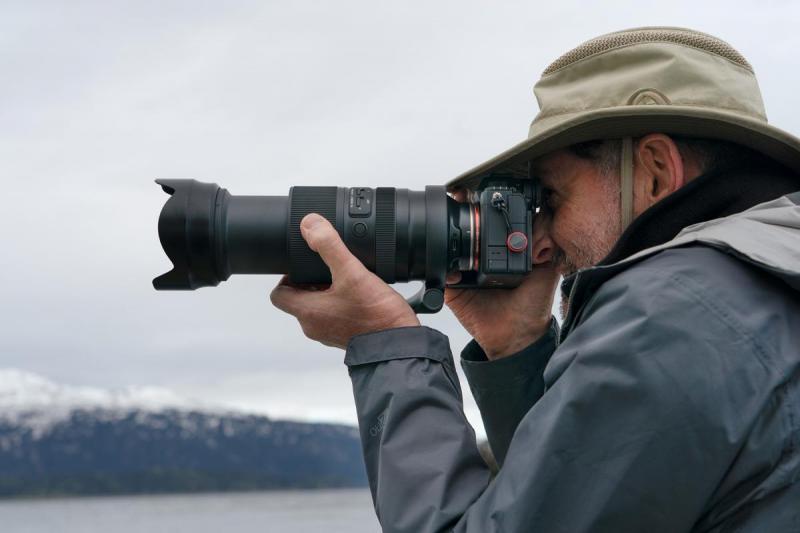
The 8x zoom ratio of the Tamron 50-400mm ultra tele zoom lens provides an unparalleled level of versatility. Starting at a wide 50mm focal length, it proves valuable for capturing sideline sports, animals, and other subjects that may come closer during shooting. Remarkably compact at 7.2″ and 40.7 oz., with a 62mm filter size, it boasts a VXD linear motor AF, VC image stabilization, and 1:2 half-macro photography capabilities with a 9.8″ MOD at the 50mm end. Additionally, it features moisture-resistant construction and a fluorine coating. The Tamron Lens Utility™ introduces a novel “Focus Limiter” function for this zoom, and there’s also an optional Arca-Swiss compatible tripod mount available.
Price: $1199 after $100 Instant Savings thru Dec 31, 2023
Find a dealer
Tamron 28-75mm F/2.8 Di III VXD G2 (model A063)
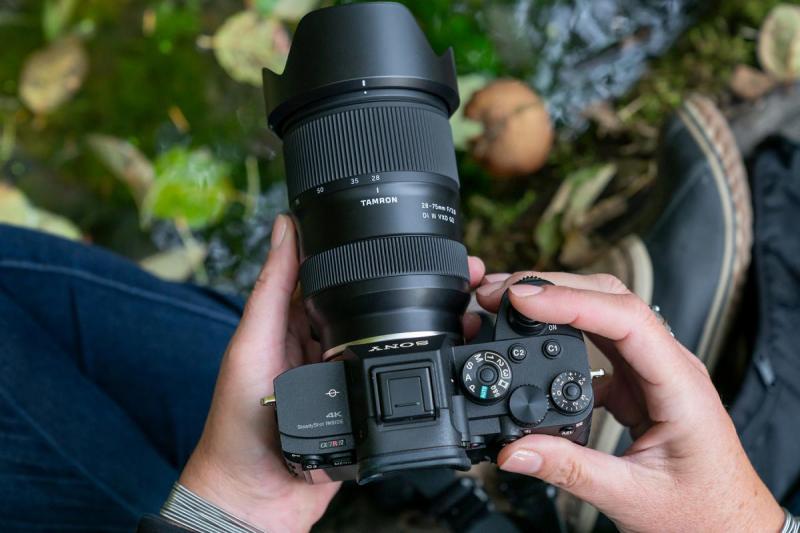
The Tamron 28-75mm F/2.8 Di III VXD G2, model A063 designed for Sony mirrorless cameras, delivers exceptional resolution and overall performance in a compact and lightweight zoom lens. It also provides captivating soft bokeh effects, characteristic of fast-aperture lenses. Featuring Tamron’s VXD autofocus motor, it ensures rapid and precise autofocus. With remarkable close-up capabilities, the lens has a 7.1” MOD at the 28mm wide end and a maximum magnification ratio of 1:2.7. The exciting 28-75mm F2.8 G2 is equipped with the innovative Tamron Lens Utility™, allowing easy customization and firmware updates directly from the lens Connector Port to your computer.
Price: $799 after $100 Instant Savings thru Dec 31, 2023
Find a dealer
Tamron 18-300mm F/3.5-6.3 Di III-A VC VXD (model B061)
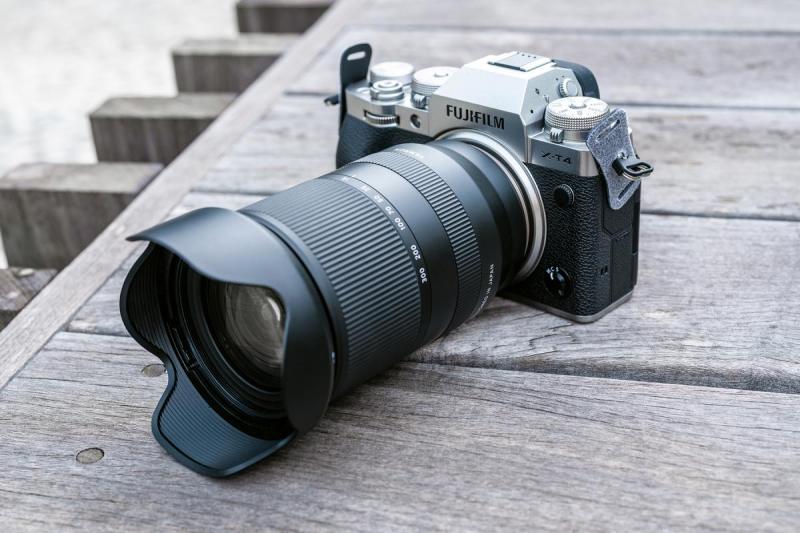
The Tamron 18-300mm VC is the world’s first APS-C mirrorless lens with a 16.6x zoom ratio, covering 27mm to 450mm full-frame equivalent, making it an ideal travel zoom. Designed for Fujifilm X-mount and Sony E-mount APS-C mirrorless cameras, it features Tamron’s VXD linear motor for quiet, agile autofocus. Specially arranged lens elements maintain high resolution, making it the top all-in-one zoom lens. With an MOD of 5.9″ at 18mm and a 1:2 max magnification ratio, it excels in close-up shots. The VC mechanism reduces image blur in low light or during ultra-telephoto shooting. Compact with a Ø67mm filter size, it offers a versatile range for diverse photographic experiences.
Price: $599 after $100 Instant Savings thru Dec 31, 2023
Find a dealer
Tamron 28-200mm F/2.8-5.6 Di III RXD (Model A071)
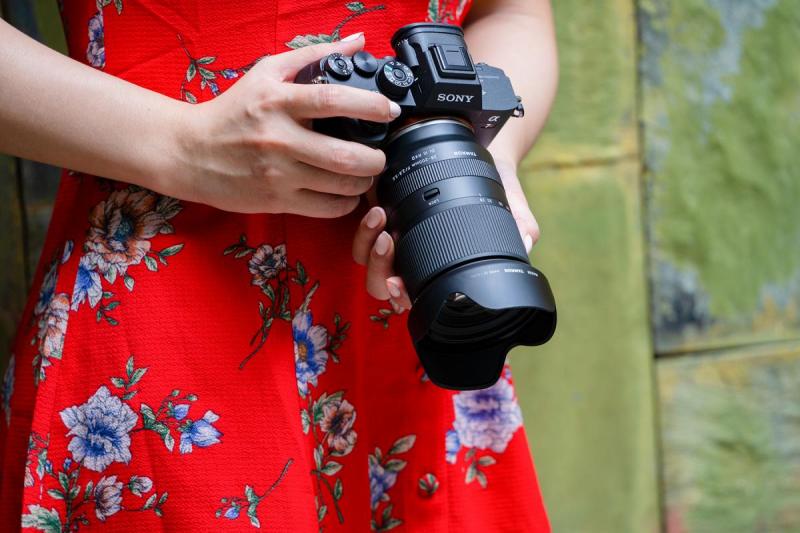
The 28-200mm F2.8-5.6 is the first all-in-one-zoom in the world to achieve a maximum aperture of F2.8 at the 28mm wide-angle end. To assure superb optical performance, it features a precise arrangement of special lens elements that accommodate the increasingly high resolutions of today’s digital cameras. When combined with a compact, lightweight full-frame mirrorless camera, it allows photographers to capture virtually every scene they encounter in daily use, travel, sports and nature.
Price: $699 after $100 Instant Savings thru Dec 31, 2023
Find a dealer
Tamron 17-70mm F/2.8 Di III-A VC RXD (Model B070)
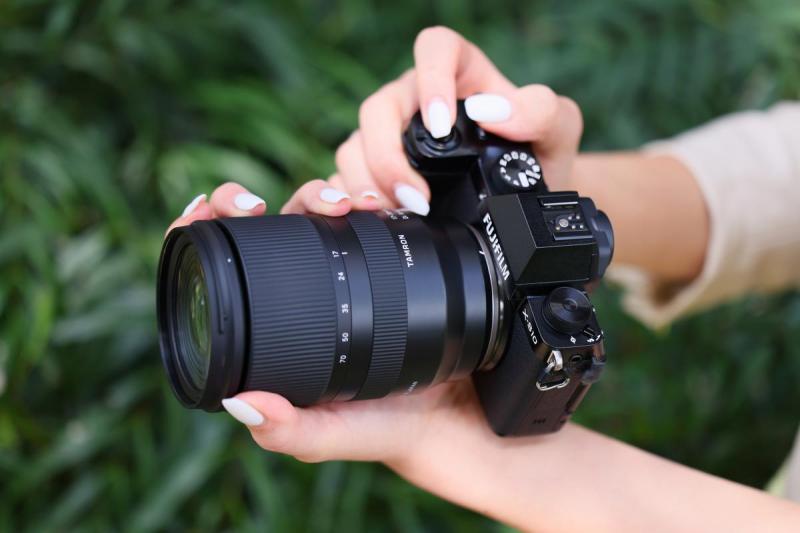
The Tamron 17-70mm features a maximum aperture of F2.8 across the entire 4.1x zoom ratio that covers the focal length range of 17-70mm (full-frame equivalent of 25.5-105mm), and superb optical performance. It is a small, lightweight lens equipped with Tamron’s VC (Vibration Compensation) mechanism to minimize camera shake. The VC mechanism leverages AI technology when shooting video. It is also equipped with the quiet RXD (Rapid eXtra-silent stepping Drive) AF motor and has minimal focus breathing. These features enable videographers to shoot comfortably when using a mirrorless interchangeable-lens camera.
Price: $699 Fujifilm X / $699 Sony E after $100 Instant Savings thru Dec 31, 2023
Find a dealer
Tamron 70-180mm F/2.8 Di III VC VXD G2 (Model A065)

The Tamron 70-180mm F2.8 G2 marks the further evolution of the 1st-generation model that earned high acclaim in the marketplace and incorporates several enhancements. Leading the list of improvements of the new G2 lens is the incorporation of TAMRON’s proprietary VC (Vibration Compensation) mechanism. The lens maintains the maneuverability of class-leading compact size and weight1 while enabling shooting with greater stability.
Price: $1299
Find a dealer
Tamron 11-20mm f/2.8 Di III-A RXD Lens for Sony E-mount & FUJIFILM X-mount
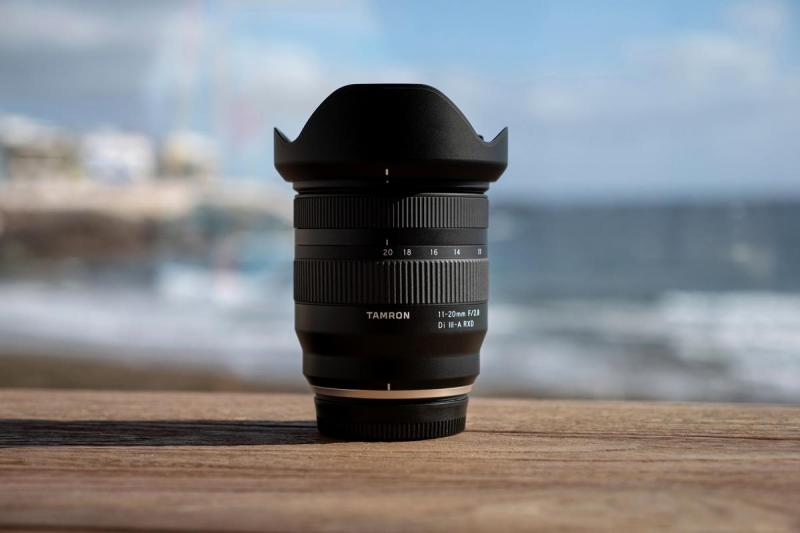
The Tamron 11-20mm F2.8 ultra wide-angle zoom lens features a constant aperture of F2.8. Even with its fast F2.8 aperture, the lens is very small and feels perfectly balanced when attached to a compact APS-C mirrorless camera body. With the full-frame equivalent zoom range of 16.5-30mm, it’s the ideal lens for everyday use. At the 11mm ultra wide-angle end, the lens allows for stunning close-range shooting performance, with its MOD (Minimum Object Distance) of 0.15m (5.9 in) and a maximum magnification ratio of 1:4. This feature invites creative wide-angle macro shooting that exploits the unique perspective that only ultra wide-angle lenses can provide.
Price: $699 Sony E after $130 Instant Savings thru Dec 31, 2023; $829 Fujifilm X
Find a dealer
Tamron 17-50mm F/4 Di III VXD (Model A068)
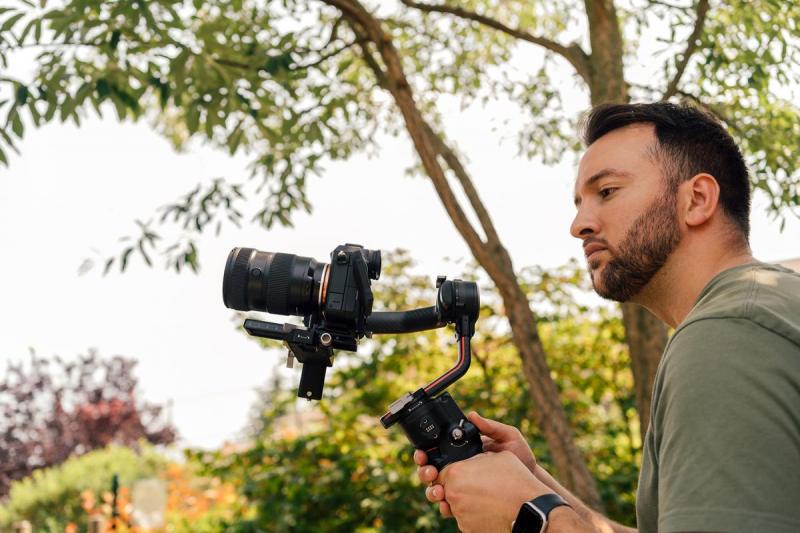
This groundbreaking lens zooms from 17mm ultra wide-angle to 50mm standard, the world’s first1 with such a dynamic zoom range for full-frame mirrorless cameras. TAMRON’s new 17-50mm F4 for Sony mirrorless cameras is a wide-angle zoom with a constant F4 aperture covering ultra wide-angle to standard focal lengths, a zoom range ideal for both still photography and video recording. This lens achieves excellent optical performance across the entire zoom range, with crispness from edge-to-edge.
Price: $699
Find a dealer
Tamron 20-40mm F/2.8 Di III VXD (Model A062)
 Tamron’s 20-40mm F2.8 is an unparalleled new fast-aperture standard zoom lens that can be easily carried around for everyday shooting for both still images and video. Designed for Sony E-mount full-frame mirrorless cameras, the lens was created in aggressive pursuit of portability that is ideal for everyday use. Starting from 20mm at the ultra wide-angle end and covering up to 40mm in the standard focal range, it is the smallest and lightest in its class1. The 20-40mm F2.8 delivers beautiful images across the entire zoom range and is great for still photography and for creating vlogs and other video content.
Tamron’s 20-40mm F2.8 is an unparalleled new fast-aperture standard zoom lens that can be easily carried around for everyday shooting for both still images and video. Designed for Sony E-mount full-frame mirrorless cameras, the lens was created in aggressive pursuit of portability that is ideal for everyday use. Starting from 20mm at the ultra wide-angle end and covering up to 40mm in the standard focal range, it is the smallest and lightest in its class1. The 20-40mm F2.8 delivers beautiful images across the entire zoom range and is great for still photography and for creating vlogs and other video content.
Price: $699
Find a dealer













 Tamron’s 20-40mm F2.8 is an unparalleled new fast-aperture standard zoom lens that can be easily carried around for everyday shooting for both still images and video. Designed for Sony E-mount full-frame mirrorless cameras, the lens was created in aggressive pursuit of portability that is ideal for everyday use. Starting from 20mm at the ultra wide-angle end and covering up to 40mm in the standard focal range, it is the smallest and lightest in its class1. The 20-40mm F2.8 delivers beautiful images across the entire zoom range and is great for still photography and for creating vlogs and other video content.
Tamron’s 20-40mm F2.8 is an unparalleled new fast-aperture standard zoom lens that can be easily carried around for everyday shooting for both still images and video. Designed for Sony E-mount full-frame mirrorless cameras, the lens was created in aggressive pursuit of portability that is ideal for everyday use. Starting from 20mm at the ultra wide-angle end and covering up to 40mm in the standard focal range, it is the smallest and lightest in its class1. The 20-40mm F2.8 delivers beautiful images across the entire zoom range and is great for still photography and for creating vlogs and other video content.